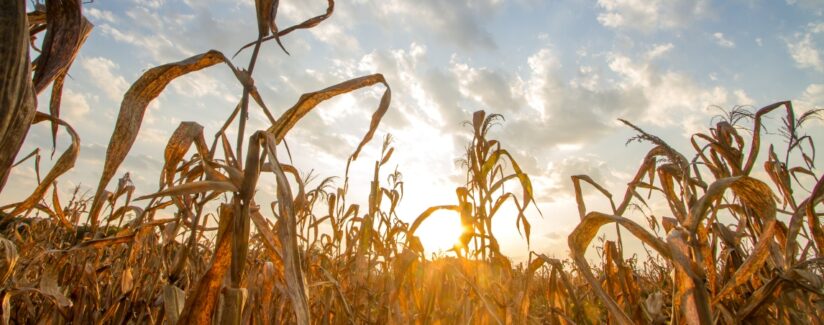
How does weather impact the food chain?
2023 delivered the warmest meteorological summer on record for North America, a lack of precipitation and high evaporation rates leaving many areas of the U.S. with drought conditions.
The National Oceanic and Atmospheric Administration (NOAA), reported that half of the United States was impacted by drought or extremely dry weather during the past year. While the statistics and impacts of drought can fluctuate from week to week, one thing remains constant: weather has a significant impact on farmers and influences the price of food.
As soil moisture dwindles, crops productivity falls. Droughts can also disrupt the planting and harvesting schedules of plants, resulting in lower yields and making plants more vulnerable to pests and diseases.
Dr. Dennis Todey is a climatologist with the USDA Midwest Climate Hub in Ames, Iowa, and said the full impact of this year’s drought is not yet known.
“There are places that will see significantly reduced yields. But at this point supply does not seem to be a major problem. The drought developed later in the season and may hit soybeans more. Earlier in the season conditions were manageable for crops overall,” he said.
Where irrigation is available, growers were able to irrigate their food crops, so the yields were not affected as much, Dr. Todey said. Row crops such as grains and soybeans are irrigated less often.
However, the drought could cause the prices of meat and dairy products to increase because the cost of animal feed will be higher, reported Clevland.com, a news and information site based in Ohio.
But drought is not the only issue. USDA’s climate tracking is witnessing storm events with greater impacts – more damaging wind or hail events and heavier precipitation, Dr. Todey said. This weather impacts food supplies and prices at the store. For instance, the prices of vegetables, nuts, and berries are higher this year because of flooding in California, according to USA Today. A combination of factors including drought, labor costs, war in Ukraine and trade disruptions led to record-high food prices in 2022, NPR reported.
Managing extreme events is challenging climatologists, researchers and agricultural producers. Farmers are proactively researching and implementing a range of practices including diversifying cropping systems, selecting crops better suited to drought conditions, and adopting soil management practices such as incorporating cover crops into rotation, in defense of conditions mother nature throws their way.
“Soils are our first line of defense against changing climate conditions,” Dr. Todey said. “Improving soil management has to be part of every operation. Changing rainfall with larger events and more rain when we have no crop canopy are also making soil loss worse. Improving soil management including reducing tillage and cover cropping can help mitigate soil loss issues.”
Weather has a direct impact on how food is grown and can affect the price of food. Farmers and scientists continue to develop methods to lessen the impact of weather and climate change.

























